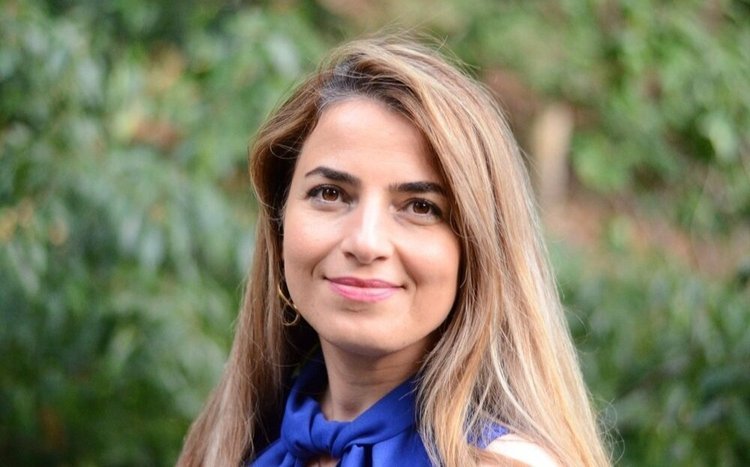
The Pheno-Type
Shahrzad Hosseini on her STEM career journey that started in Iran
“The Pheno-Type” takes a closer look at the people behind phenomics-driven drug discovery.
“As a materials scientist, I have always loved working in multidisciplinary environments on multifaceted problems. Here as a data scientist at BioSymetrics, I am constantly fascinated by how we tackle drug discovery and healthcare problems from various perspectives.”
Shahrzad Hosseini, PhD
Head of Data Science,
Clinical
ABOUT SHAHRZAD
Undergraduate studies at Tabriz University, Iran
Master’s Degree in material science and engineering from Sharif University of Technology, Iran
PhD in Materials Science from McMaster University, Canada
Postdoctoral Fellowships at University of Cambridge, UK and University of Waterloo, Canada
Q: As a girl growing up in Iran, tell me how you became interested in science and math?
Shahrzad: When I was in primary school, which was an all-girls school, I thought I wanted to be a physics professor at university. I don’t think I knew exactly what physics was at the time, but my uncle was doing graduate studies in physics and unconsciously made him my role model. My maternal grandmother was also very encouraging of my interests and education, likely because she wasn’t allowed the same opportunities.
In middle school, I was accepted into a gifted program where science was taught beyond the regular curriculum, and it was divided into biology, physics, and chemistry. It was then that I fell in love with how physics explains why and how many phenomena around us happen. I had great female teachers, and my physics teacher made learning so interesting – she was a role model that inspired me.
Q: I can imagine that going to university and then grad school was a much different experience, with integrated genders and fewer female role models in the sciences. How did you navigate that transition and how did your interests evolve?
Shahrzad: I did my undergraduate studies in materials science and engineering, an interdisciplinary subject where physics, chemistry, and engineering are amalgamated. There were no female professors and only about a third of our class was female. During that time, I still lived with my parents as is typical in Iran, and my family was always supportive and encouraging of me and my studies.
It was when I was taking a course on crystal structures of materials that I came to see how thermodynamics dictates the material’s structure, and how physics explains the properties and how novel engineering applications become possible based on those properties. After this realization, I decided to pursue materials science in my master's with a focus on magnetic nanomaterials for medical applications.
Q: After completing your master’s degree at Sharif (known as the MIT of the Middle East), what options did you have and what brought you to pursue your PhD in Canada?
Shahrad: I worked for two years as a Materials Engineer with the Ministry of Oil, which was a male-dominated career choice, but where I constantly pushed boundaries. But coming from the worldly academic exposure that I had at Sharif, I was still interested in continuing my studies and doing so internationally.
This brought me to the Canadian Centre for Electron Microscopy at McMaster University for my PhD, where I was using state-of-the-art microscopes to investigate the structure of semiconductors. My fascination with smaller systems had led me to atomic and sub-atomic worlds and I decided to do my PhD on transmission electron microscopy of materials where I could investigate how an extra or missing row of atoms in a material structure can alter its behavior and what electronic interactions can tell us about the material’s properties. When I moved to Canada, this was the first time I had traveled outside of Iran and my first time living on my own!
“What I have come to realize is that your unique perspective to a problem that you are working on, even when your training label does not match what you are doing, brings a value to the table”.
Q: How did you make the transition from an academic career in materials science and engineering to your current one as a Data Science Leader at BioSymetrics, working in the biotech field?
Shahrzad: Eventually this took me on a journey to two other continents (University of Cambridge, UK and Monash University, Australia) as a post-doctoral fellow to understand what in atomic structures of wide band gap semiconductors and ionic batteries alter their electronic properties and how those properties can be harnessed for applications that we are after. It was here, where I had to use a mathematical perspective to handle a variety of complex data in the form of images and signals. This opened a new door to me where I was using computers and machine learning models to denoise the data to unravel fascinating patterns and meaning underneath the noise. This in many ways is analogous to what I am doing now as a head data scientist at BioSymetrics, where I am looking at patients' data whether it be clinical or ‘omics data and trying to understand why their body is behaving differently and how it can be brought to the right track.
Q: What lessons have you learned through your career path, and what message would you want to share with other girls interested in STEM careers?
Shahrzad: What I have come to realize is that your unique perspective to a problem that you are working on, even when your training label does not match what you are doing, brings a value to the table. My background in materials science has given me a unique toolkit on the challenges I face in my current role both from a scientific and applied sense, blurring the boundaries between different scientific disciplines.
Being a female scientist in a very male-dominated field, whether in Iran, Canada, or the UK, I have attended many meetings where I was the only female around the table. Thankfully that has changed here at BioSymetrics, but I have learned to always try to speak my mind, share ideas, ask questions, or challenge the decisions.
For other girls, especially where things are so difficult in Iran right now, my message is to keep pushing boundaries and persevering. All the changes in my life, from moving countries to changing fields and career paths, have been difficult but so rewarding. Change is hard, no matter how big or small, but necessary and good.



